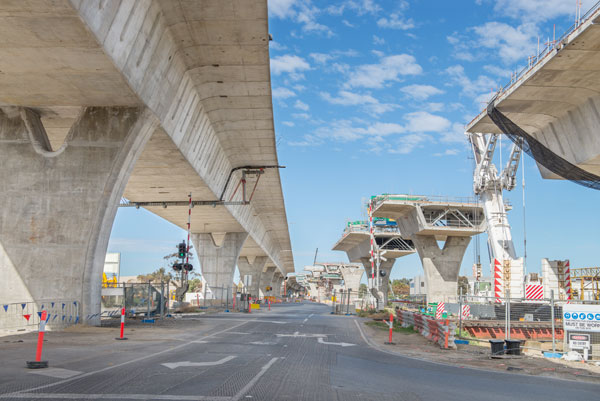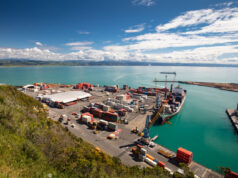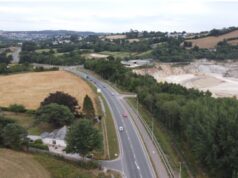When a road bridge collapsed in the US city of Pittsburgh in January, injuring four people but thankfully killing no one, there was a certain irony in its timing. Just hours later, President Joe Biden was due to arrive in the city to talk through the Infrastructure Investment and Jobs Act that had, relatively speaking, just passed into law.
Parts of Biden’s US$1 trillion infrastructure package, which had been pushed through the US Senate with bipartisan support in November 2021, was designed specifically to address the country’s crumbling network of roads and bridges. US$110 billion has been ringfenced for the improvement of roads and the approximately 45,000 bridges said to be in a poor condition in the US.
Currently, Australia’s bridges are generally not thought to be in such a parlous state. However, they are getting to the end of their lifecycles: of the 53,000 or so public road bridges across the country, an estimated 70 per cent of them are more than 50 years old. And on top of the problems of natural weathering and ageing, many of them support traffic loads far higher than they were originally designed for.
Because of this, Colin Caprani, a professor of engineering at Monash University, believes around 30 per cent of Australia’s bridge network will be structurally deficient by 2035 – a similar percentage to that of the US.
“It gives you an idea of the influence of ageing and increasing traffic roads and what they’re doing to our bridges. That’s where we’re headed,” he told Government News in 2018.
So what is being done to monitor and manage these assets? And what could the consequences be if Australia’s public bridges are allowed to fall into the same potentially hazardous condition as those of the US?
The cost of maintenance
About 30,000 of Australia’s road bridges are managed by local councils, who are charged with inspecting these assets to ensure their safety and viability.
This is done via three levels of inspection, which include a cursory check to confirm there is no obvious damage, a closer visual inspection of all surfaces and components – which takes place every five years – and a full and detailed engineering inspection. In NSW, there is also a fourth level of inspection, which involves load testing.
These inspections are carried out to maintain the structural integrity of bridges and to avoid, in the most extreme cases, catastrophic collapses, such as that of the Ponte Morandi in Genoa in 2018.
While sometimes viewed as a frustrating expense, the costs associated with maintenance are still far lower than would be needed to reconstruct failed bridges. According to a report by Austroads: “The annual maintenance expense for 33,500 bridges in Australia is around $100 million and the replacement cost of faulty bridges could run to billions of dollars.”
Public information on the subject is scarce, making it hard to determine the true state of bridges in Australia. Even so, Caprani warns that there needs to be greater funding for maintenance now to avert far costlier operations – including full rebuilds – further down the track.
“Without question, engineers must be given the resources they need to keep the public safe and communities functioning,” he says. “Bridges are not set-and-forget pieces of infrastructure, but, in a structural sense, are living and breathing systems.”
Using digital asset management systems
Austroads has recently published an engineering guideline specific for road bridges. It gives guidance on best-practice asset management of bridges, detailing such issues as “the consequences of structural failure; the engineering complexity of structural performance of a wide range of structural types, materials, condition, design loads and actual applied loads; and the high capital value of assets”.
When it comes to ongoing asset management, Caprani argues for greater digital asset tracking and the use of digital twins. By installing toolkits and systems that gather real-time data for individual bridges, councils all over the country can keep a closer eye on the current state of structures within their network.
Digital asset management systems can deliver reporting capability for whole-life cost analysis, lifecycle planning, monitoring and maintenance needs. Importantly, where assets are remote or hard to access, they can eliminate the need for costly and time-consuming in-person inspections.
Caprani says: “It’s surely time that smart sensing solutions are mandated for use across all our aged infrastructure to protect people from events like the Genoa bridge collapse.
“The time is nigh that we give the problem adequate resourcing. Then we can have the smart road network of the future, with automated truck platoons carrying hundreds of tonnes of goods, that so many people are excited about.
“But right now, given the current state of resourcing, the science of managing and maintaining our existing infrastructure, it’s difficult to think that this envisaged future can be fully realised.
“The solution is to comprehensively resource and empower the engineers who deliver on public safety and functioning communities.”














